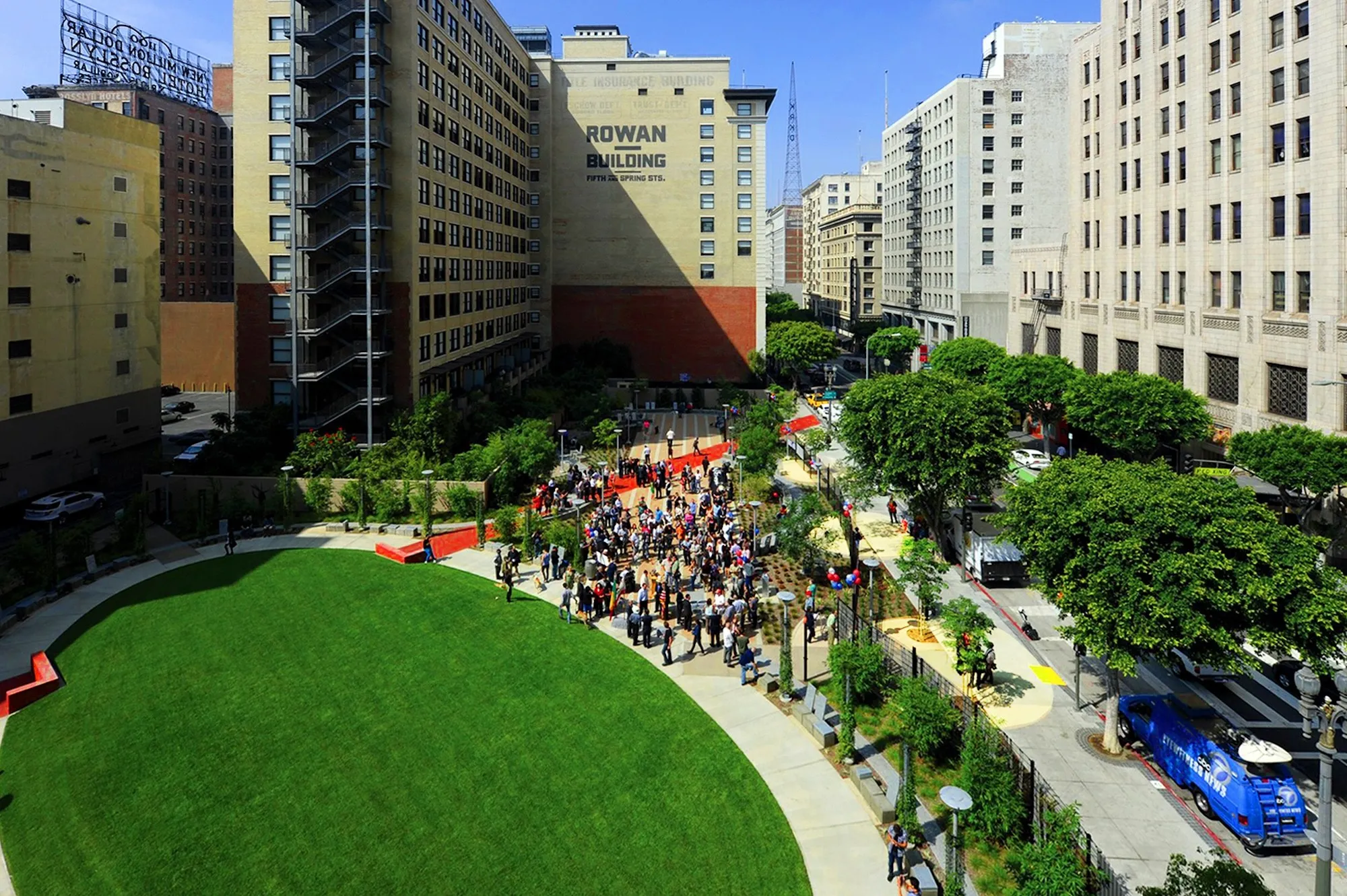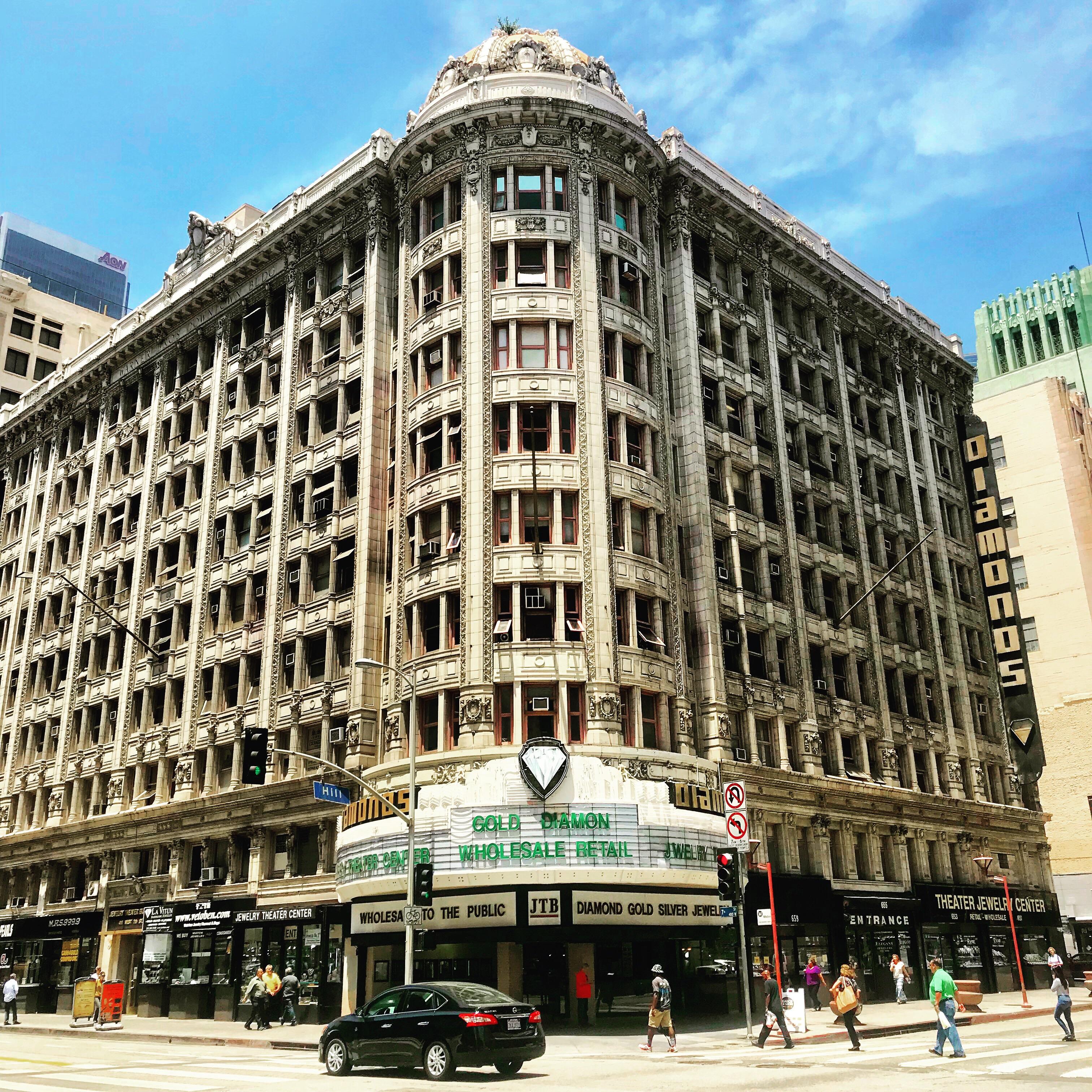Known as the artistic heartbeat of Downtown LA, Gallery Row is a vibrant district teeming with creativity and culture. This area boasts numerous art galleries, pop-up exhibits, and studios that showcase works from local and international artists. Centered around Spring and Main Streets, Gallery Row attracts crowds eager to experience cutting-edge art, live performances, and eclectic dining. The district’s lively ambiance attracts art enthusiasts, collectors, and those seeking inspiration in a modern urban setting.

The Theater District preserves Downtown LA’s golden age of entertainment with its stunning collection of historic theaters along Broadway. Once the hub of glamorous movie premieres and live performances, the district is home to iconic venues like the Orpheum, Los Angeles, and Palace theaters, showcasing a mix of vintage charm and modern events. Today, efforts to revitalize the area have turned it into a cultural destination and is home to Apple, Foot Locker, Vans, Gentle Monster, Aesop, Urban Outfitters and more.

Steeped in history, the Old Bank District combines historic charm with contemporary living. Once the financial center of Los Angeles, this district features early 20th-century bank buildings repurposed into trendy lofts, art galleries, and restaurants. Its pedestrian-friendly streets are lined with boutique shops, artisanal coffeehouses, and local eateries, creating a vibrant urban village. The Old Bank District exemplifies the transformation of Downtown LA, merging its storied past with a thriving creative community.

The Los Angeles Jewelry District is a historic hub of over 5,000 jewelers, designers, and craftsmen located in Downtown LA. Known for its incredible selection of fine jewelry, diamonds, and custom pieces at competitive prices, it remains a destination for shoppers and industry professionals from around the world.

Stay in know about places, people and events in Downtown's Core!
Subscribe Now